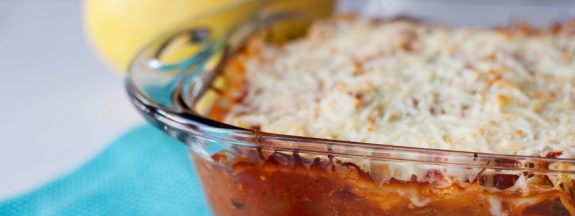
Meat Meat Meat Is My Favorite Thing To Eat
A
Q: Jason…my favorite meat market (they have great haggis) has a score of 90! How is this possible? They don’t even cook anything!
-Adam
A: Hey Adam, great question! Meat markets are those sacred spots, usually in grocery stores, that allow us the opportunity to pick out what slab of protein we want for dinner. From the elegant scallop, to the downright dirty rack of ribs, meat markets have most anything you need for that dinner, BBQ, low county boil, or whatever event might come your way. Let’s talk about how that place got a 90…
You are correct, most meat markets don’t cook anything. This should be a clue as to what caused your favorite spot to get that score. In the absence of cooking, the items we look at during an inspection are basically food storage and food holding. Remember that foods must be stored by final cook temperature. That means that foods that have the highest final cook temperature must be stored at the bottom. For instance, chicken has a final cook temperature of 165 degrees F. So, what’s going to happen if you put raw chicken over a raw hamburger? Well let’s say Bubba opens up the reach in cooler, and is looking for an ice cold cherry coke. He sees one in the very back, and as he’s reaching for it, he tips the chicken and the chicken juice just teeming with salmonella hits the burgers stored underneath. Let me tell you something…Bubba doesn’t care. As long as that chicken or burger didn’t hit the floor, he’s not worried about it, (and heck, most of the time, he wouldn’t care if it DID hit the floor, so long as nobody saw it). So, next thing you know, you’ve stopped by Bubbas Meat Market on your way home. The kids are screaming, the Sirius XM isn’t working right, your “check engine” light just came on, and you’re about to run out of gas. You need something quick and easy. Burgers! Easy! Fire up the gas grill, throw ’em on, and in 15 minutes, dinner is served. A perfect burger that just reached 155 degrees F. Everybody dig in, right? Wait a minute…remember when Bubba was reaching for that cherry coke? Oh yeah, salmonella from that juice was all over those burgers…Salmonella isn’t killed until 165 degrees F…Uh-oh…You’ve got a problem.
Food storage issues? That’s a 1.5 point violation right there, unless it’s a repeat, in which case it could be a 3 point violation.
With all those bacteria, viruses and parasites around raw meat, you would think it would be pretty important to keep everything clean, wouldn’t you? Well it is! Do you think Bubba takes time out of his day to mix up the proper concentration of chlorine sanitizer? Heck no! He’s busy, man! Got to get those ribeyes sliced, all that meat ground, and those birds cut up. Aww man! Bubba forgot to clean the slicer, grinder, and his knives yesterday. Oh well, let’s just wipe everything down with this rag, and throw it on the counter. No sanitizer? Dirty equipment? Another 1.5 point violation (or 3 if it’s a repeat), plus wiping cloths stored on counters and prep areas? Nope, sorry Bubba, cloths used for wiping must be stored in a sanitizer solution during pauses in use. Think it’s not a big deal? What about that chicken juice you just wiped up off the floor? I just watched you clean your knives with the same rag! That’s another .5 points.
Hey look over there! Meat on the floor over by the walk in cooler. Bubba had a delivery today! All those boxes of meat came in this morning, and you’ve been so busy you just haven’t had time to put them up? Well, I understand, but its 3:30 now…Improper cold holding? Another 1.5, (or 3 if rep….oh you get the idea…) plus food on the floor? .5 points.
Hey Bubba, what’s this chunk of meat over here by the slicer? It’s frozen, and you’re waiting on it to thaw so it will slice easier? Remember, frozen foods have to thaw under refrigeration or under running water. Improper thawing? .5 points. Bubba’s score is rolling downhill fast.
Hey Bubba, what’s in this Yeti 110? Uh, yeah, I can see it’s some meat…what I mean is, what is it, and where did it come from? It’s a goat carcass from Gambling Gary’s Goat Grocery? Yeah, that’s not an approved source, Bubba. That’s another 1 point. You’re going to need to get that ghastly gruesome goat gone…now.
Oh hey! Over here is a big chunk of meat sitting in one compartment of your 3 compartment sink! And I see you have some dirty knives and meat trays in the next compartment. Bubba, I’ve told you over and over that you can only use your 3 compartment sink for one thing at a time. You can’t have dirty utensils in the sink at the same time as prepped food. That’s another 1 point, because this is the 5th time I have marked this on your inspection.
I see your dumpster doors are open, and as usual, the drain plugs are missing. In reviewing your past inspections, I see we have marked drain plugs missing 6 times. This is a repeat violation, so that’s another 1 point gone. You just can’t let delicious trash juice keep leaking all over the parking lot. Insects and rodents love it! And if they can find their way to your dumpster, they can find a way in to your meat market, Bubba.
OK Pal, we are almost finished with your inspection. Just show me your food protection manager training certificate, and I’ll get this all typed up. What’s that? You are not a certified food protection manager? Aww man, that’s another 2 points. Remember, a certified food protection manager must be onsite at all times of operation.
So Adam, by my count, that’s 11 points worth of violations right there, which would give Bubbas Meat Market a score of 89. Believe me friends, it can and does happen. If your favorite meat market has a low score, you need to be asking yourself “why?” Remember, all of our inspections can be found online at http://www.foothillshd.org/environmental/environmental-health-forms-2/ It is an invaluable tool, and I strongly encourage you to use it.
Stay safe, friends!
SUBHEADING




